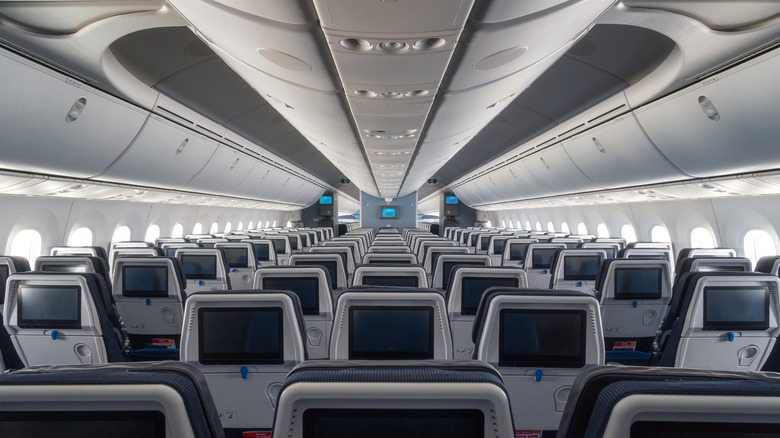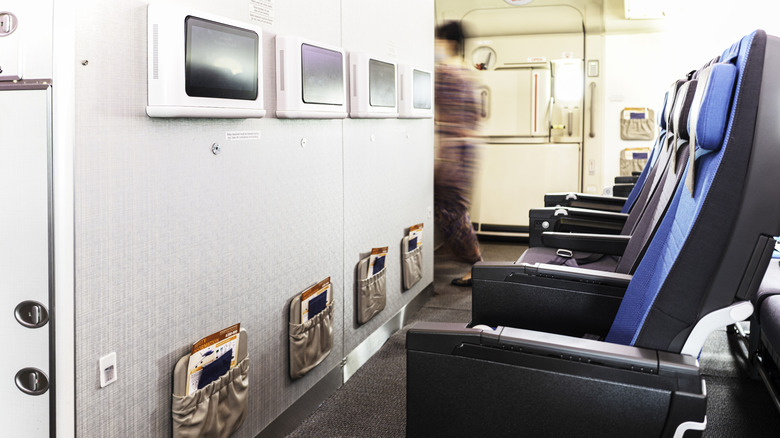Think Twice Before Sitting In This Seemingly Convenient Row On The Plane
Travelers are sometimes surprisingly opinionated about where they like to sit on an airplane. If you have a tight connection or just can't wait to get to your destination, you're likely a front-row enthusiast. If you want to take your time boarding and have a higher likelihood of a row to yourself, you're probably extolling the virtues of the back. Then you have the die-hard window-seat fans who agree that this is excellent for a red-eye flight and the frequent travelers who know the aisle seat is the best choice. Regardless of your personal opinion, there's a certain row — the bulkhead row — that's seemingly extra-convenient and spacious — so much so that carriers like American Airlines and Delta offer a seat here as a perk in their higher-fare booking options.
The bulkhead is the divider found between the different sections of an aircraft, separating the galleys and, in some cases, the various classes. And the bulkhead row is usually right before this partition, which means you don't have anyone ahead of you. That's right, no irritating passengers reclining their seat almost into your lap while you're trying to enjoy your box of spaghetti bolognese. Often you'll have more legroom as well, so you can stretch out in front of you instead of in the aisle — one common passenger activity that drives flight attendants up the wall. And if you're in the row facing the forward galley, you'll get served first, so you can grab that chicken dinner while it's hot, while those unlucky enough to be in the back have to contend with whatever's left.
But although there are clear benefits to getting — and even advance-booking — a seat in the bulkhead row, think twice before doing so. There are many disadvantages that come with it, which you should consider carefully.
The cons of the bulkhead row
So, what's wrong with a bulkhead row seat anyway? Well, you're going to be close to all the action, as these seats are usually right by the lavatories or galleys. If you're a sensitive sleeper, you'll be constantly woken up by the clatter of plates as crew members load up their carts and by the whooshing suction of toilets flushing. This row also comes equipped with bassinet hooks, where the crew can install temporary baby beds — which is wonderful if you're traveling with an infant. If you're not, though, your next-door neighbor for the entire flight may be a screaming — and possibly poopy — baby, since this row is usually preferred by parents.
Additionally, viewing the in-flight entertainment and eating are both more difficult here. Your tray table and screen are typically stored inside the armrest, meaning they can't be raised or moved. The screen may sit lower or at an awkward angle, or farther away against the wall, while the tray is usually flimsier and positioned closer to your body. This can give you the feeling of being trapped — even more than in other already cramped plane seats.
Finally, since there's no one in front of you, there's no under-seat storage, so all your belongings must go in the overhead compartments. You can, of course, access them after takeoff and before landing, but constantly standing up and stepping into the aisle to search through your carry-on for a sweater or that stash of snacks you want can be a hassle. So, if you do have a choice, a seat in the bulkhead row is best avoided — unless you're a new parent or you genuinely enjoy the excitement of being close to the kitchen and commodes.

